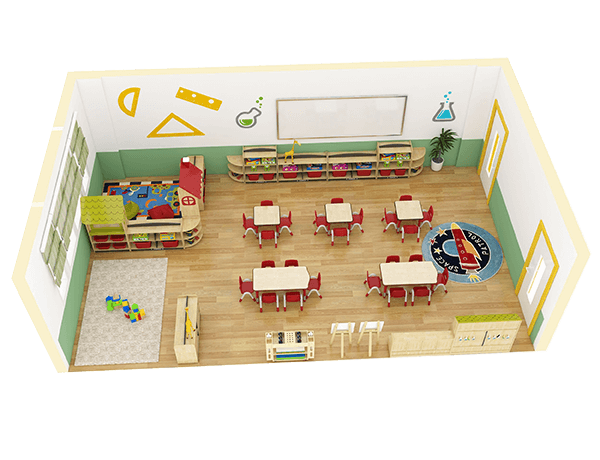
Optimal Learning Spaces: Crafting Success through Montessori Classroom Setup
In the realm of education, the Montessori classroom setup stands as a cornerstone for creating environments that foster independent learning, exploration, and a sense of community. This exploration delves into the key elements of Montessori classroom design, the impact on student engagement, and the enduring benefits it offers for cultivating well-rounded individuals.
The Foundation of Montessori Philosophy: Environment as the Third Teacher
Central to Montessori philosophy is the belief that the environment acts as the “third teacher.” The Montessori classroom setup is meticulously designed to be an inviting, purposeful space that encourages curiosity and self-directed learning. From the layout of furniture to the choice of materials, every element is intentional, creating an environment that nurtures the child’s natural desire to explore.
Order and Beauty: Aesthetic Harmony in the Classroom
Montessori classrooms are known for their order and beauty. The intentional arrangement of materials, the use of natural colors, and the incorporation of aesthetically pleasing elements contribute to a harmonious environment. This focus on aesthetics is not merely decorative; it plays a vital role in creating a serene and focused atmosphere that supports learning.
The Prepared Environment: A Dynamic and Purposeful Space
Montessori educators emphasize the concept of the “prepared environment.” This means that the classroom setup is thoughtfully arranged to meet the developmental needs of the students. Materials are displayed on open shelves, organized by subject, and are easily accessible. The classroom is designed to promote independence, with everything within reach for young learners.
Freedom of Movement: Supporting Physical Exploration
Montessori classrooms prioritize freedom of movement. Furniture is arranged to allow ample space for children to move around independently. This design choice recognizes the importance of physical exploration in a child’s learning journey. It encourages motor development, spatial awareness, and a sense of autonomy as children navigate the classroom environment.
Materials for Exploration: A Hands-On Learning Approach
At the heart of the Montessori classroom setup are the carefully curated materials. These materials are designed to be self-correcting and invite hands-on exploration. Each material serves a specific educational purpose, promoting the development of skills and understanding through direct interaction. The emphasis on tactile learning fosters a deep and meaningful connection to the curriculum.
Mixed-Age Groupings: Fostering Community and Collaboration
Montessori classrooms often feature mixed-age groupings, creating a community-like atmosphere. Older students serve as role models and mentors for younger ones, fostering a sense of responsibility and cooperation. The mixed-age setup aligns with the Montessori philosophy of learning as a social activity, where collaboration and mutual support are integral to the educational experience.
Classroom Roles: Empowering Students with Responsibilities
In the Montessori classroom, students are given roles and responsibilities. This could include tasks like caring for plants, organizing materials, or leading a group activity. Assigning responsibilities empowers students, instills a sense of ownership in the classroom community, and reinforces the idea that each individual contributes to the overall functioning of the space.
Natural Light and Outdoor Connection: Bringing the Outside In
Montessori classroom setups often prioritize natural light and a connection to the outdoors. Large windows, strategically placed plants, and outdoor learning spaces contribute to a sense of openness and a connection to the natural world. This intentional design choice aligns with the Montessori emphasis on environmental awareness and appreciation.
Montessori Classroom Setup: A Link to Lifelong Learning
For those interested in exploring and implementing the Montessori classroom setup, Montessori Classroom Setup serves as a valuable resource. This platform offers insights, courses, and practical tools designed to support educators, parents, and anyone passionate about creating optimal learning spaces. Explore the link between Montessori classroom setup and the transformative impact it can have on educational practices.
Conclusion: Nurturing Holistic Development through Environment
In conclusion, the Montessori classroom setup is a powerful tool for nurturing holistic development. By creating environments that prioritize order, beauty, freedom of movement, hands-on exploration, and community engagement, Montessori educators set the stage for lifelong learning. The intentional design of Montessori classrooms reflects a deep understanding of the child’s developmental needs, fostering a love for learning and laying the foundation for well-rounded individuals. Embrace the principles of Montessori classroom design, and embark on a journey of creating spaces where education becomes a joyful and transformative experience.




